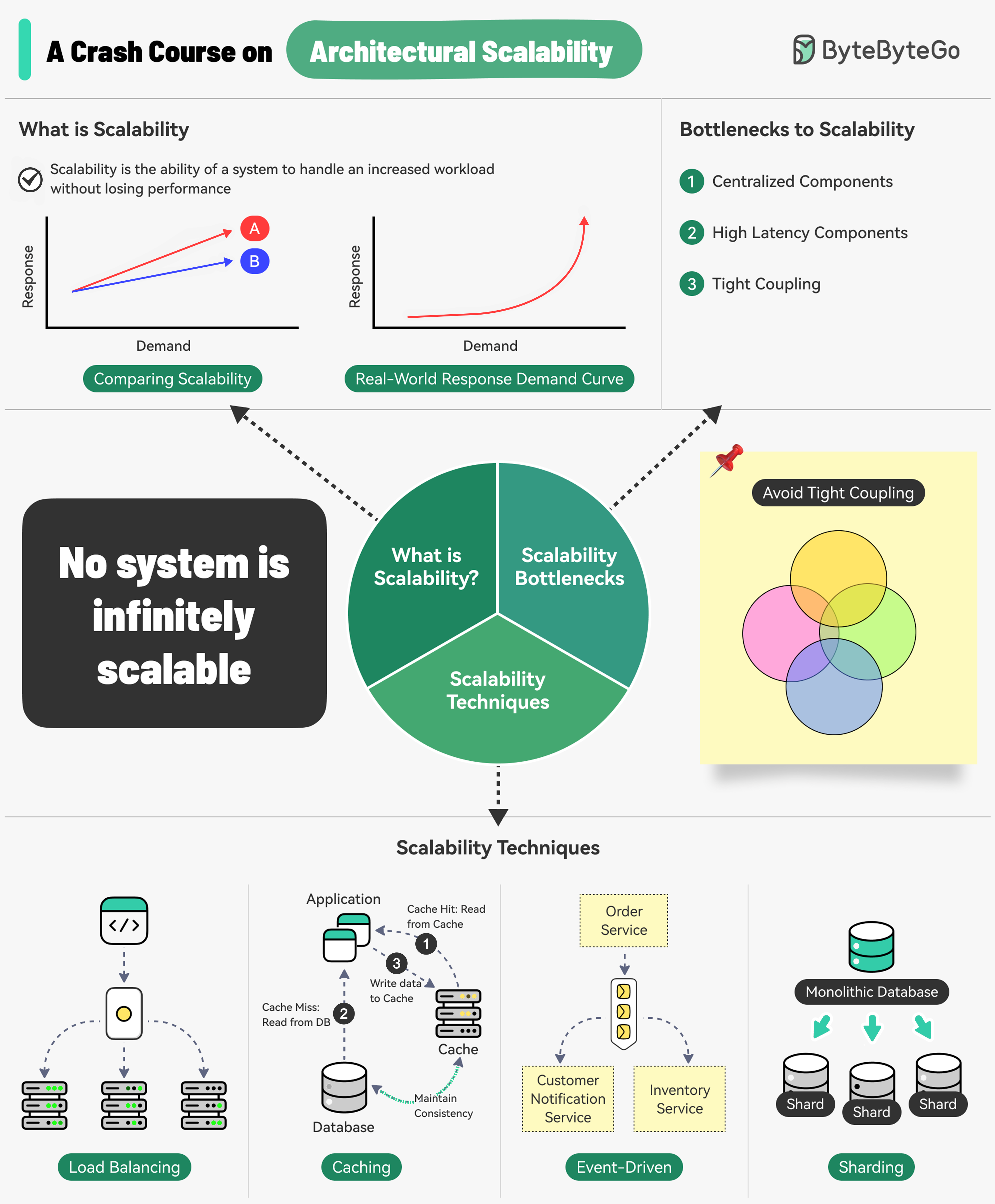Learn about architectural scalability, bottlenecks, and key techniques.

Scalability is the ability of a system to handle an increased workload without losing performance.
However, we can also look at scalability in terms of the scaling strategy.
Scalability is the system’s ability to handle an increased workload by repeatedly applying a cost-effective strategy. This means it can be difficult to scale a system beyond a certain point if the scaling strategy is not financially viable.
Three main bottlenecks to scalability are:
Therefore, to build a scalable system, we should follow the principles of statelessness, loose coupling, and asynchronous processing.
Some common techniques for improving scalability are as follows: